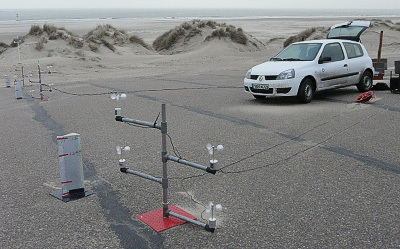MANAGING SAND MOVEMENTS


Experiments to provide a better understanding of windborne sand movements have been conducted since January 2011 at the Braek Dyke, an asphalt structure marking the boundary between the beach and Dunkerque-Port’s maritime dock.
Windbreak structures were installed in order to assess the possibility of holding back the sand which was being blown on to the dyke and not staying at the top of the beach. The ultimate goal is to use the sand accumulating on the dyke, firstly to protect the structures against storms, and secondly as a support for the nature restoration of the site.
On a more occasional basis, measuring instruments such as airspeed indicators and sand traps will be installed in the area by a team of scientists from the Laboratory of Oceanology and Geosciences, making it possible to quantify sand movement during windy periods.
Information panels will be set up on site to explain the purpose of the work being done. The success of these experiments depends on public awareness, to ensure that the structures installed will not be damaged.
These studies form part of the collaboration with the Opal Coast University (see press release of 31 March 2010) to establish a programme for the management of Dunkerque-Port’s sea frontage.

